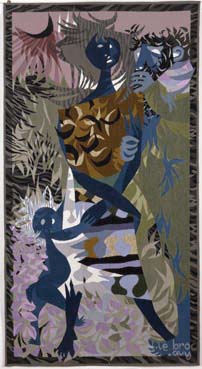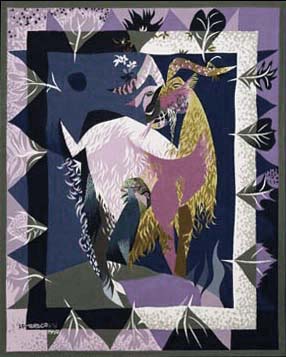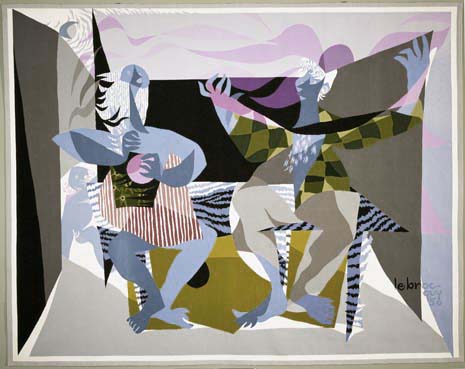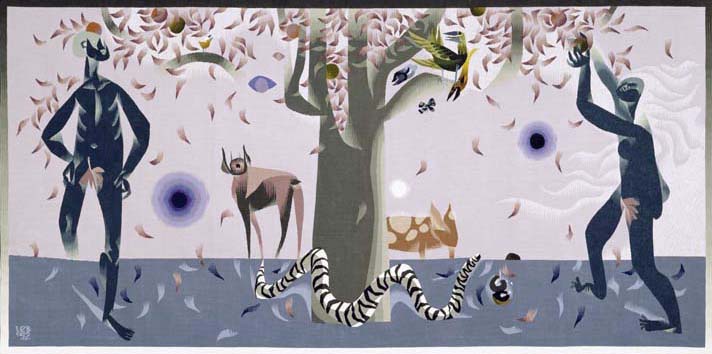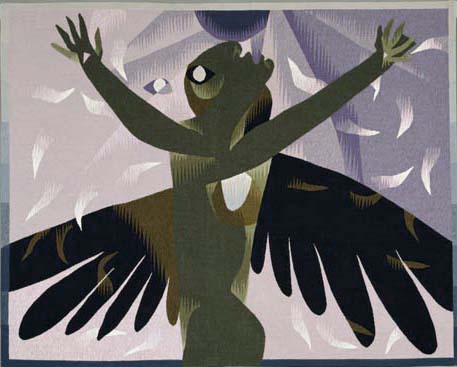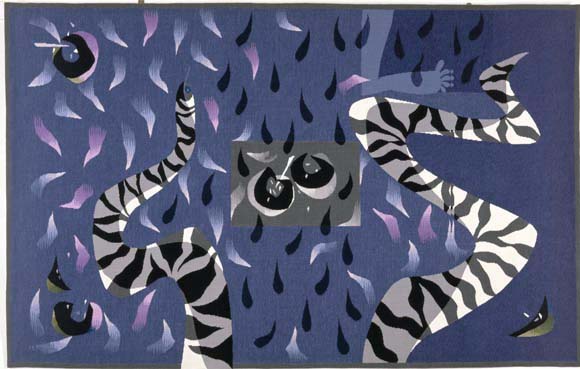exhibition programme | paintings | tapestries | prints | chronology of a life | market | biography & bibliography | agents | news | contact
Colour-inverted tapestries (c.1948-99)
Artist's notes
In Dublin during the early forties, I became interested in the effect of colour, particularly in the relationship of the chromatic scale in music to the twelve subdivisions of the primary colours, red, yellow and blue. I still have some remaining charts I made at the National Library in which I attempted to relate musical notes to their corresponding colours by means of their comparative vibrations. I was fascinated by the possibilities of reconstructing musical chords in pure colour. In paintings I made at the time, such as Spanish Shawl (1942) I did in fact manage to incorporate major and minor 'colour chords' for their emotional resonance.
At the same time I was also excited by the dramatic effect caused by the visual inversion of both colour and tone. I then noted:
Further to the emotional character of single and interrelated colour, lies the magic of colour reversal. Staring fixedly at a colour or colours, the 'saturated' eye - shifting to a white surface - precisely inverts colour both in hue and in tonality. A retinal 'memory' emerges inverted, an entirely new perception as contrary as night from day.
Some years later in London (1948 - 52) I designed a number of tapestries for Tabard Frères et Soeurs, Aubusson, which included Travellers, Garlanded Goat, and the Eden series. These tapestries were designed by means of a technique I learned directly from the master in this medium, Jean Lurçat. No coloured cartoon is involved. Instead a purely linear cartoon defines areas within which a range of coloured wools are indicated by numbers.
But, further to these first cartoons, my excitement regarding the drama of colour-inversion encouraged me to make at the time second versions of these linear cartoons, inverted both in colour and tone.
I have had to wait some fifty years before these colour-inverted cartoons could be woven at Aubusson by the great Lissier René Duché who along with my son Pierre has at last enabled me to realise their inverted transformation of mood, 'as contrary as night from day.
